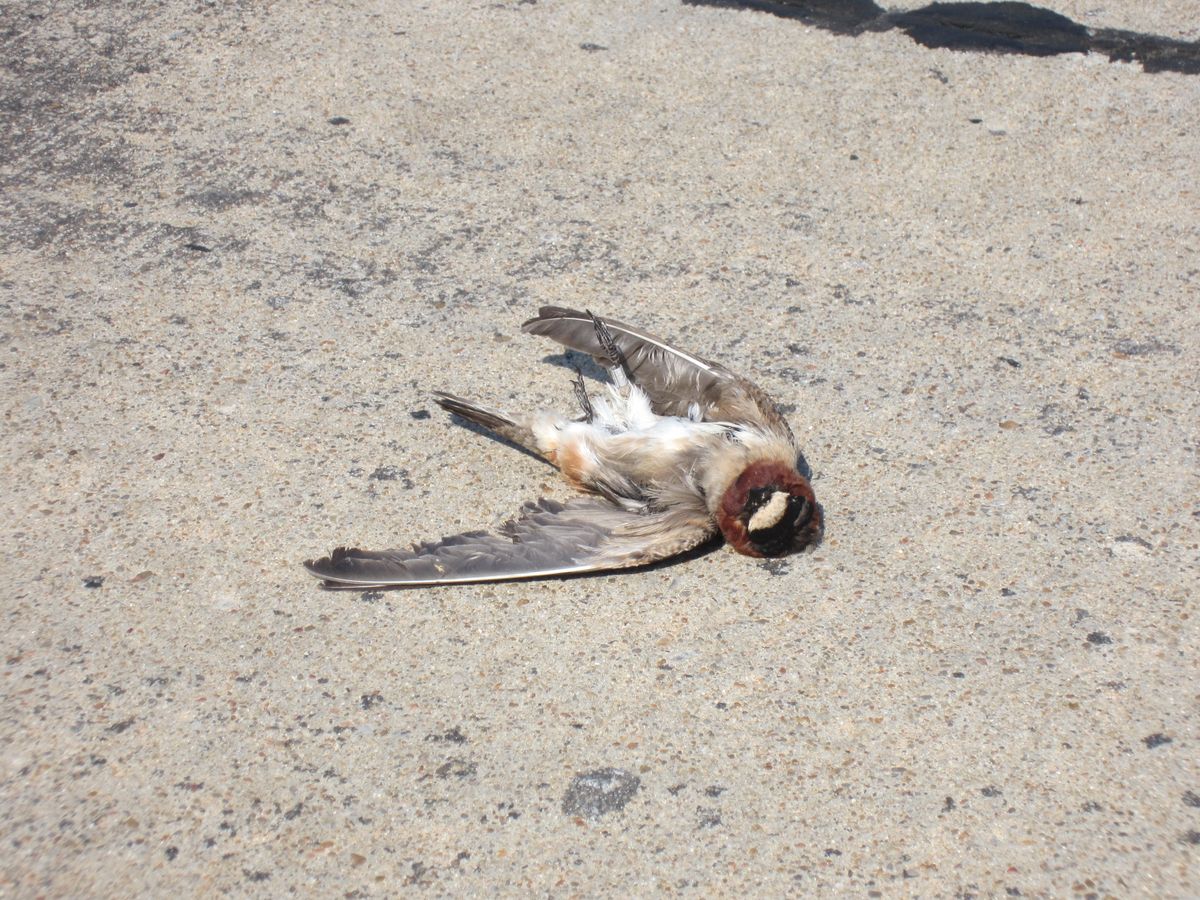
To avoid becoming road kill, birds may be evolving to have new traits such as shorter wingspans that allow better maneuverability, new research suggests.
The researchers, who detailed their results today (March 18) in the journal Current Biology, found that the number of cliff swallows hit by cars has declined dramatically over the last 30 years.
Those swallows that do get hit tend to have longer wingspans, suggesting evolution is selecting for birds with shorter wingspans, which can turn away from passing cars more quickly.
"It's possible to observe evolution occurring in contemporary time. Over a 30-year period, we've seen natural selection for birds that are able to avoid being hit by cars," said study co-author Charles Brown of the University of Tulsa in Oklahoma. "The work also illustrates that some animals can adapt relatively quickly to these urbanized environments."
Accidental conclusion
Scientists have shown that animals, such as Darwin's finches, can evolve to have adaptations to new environments in mere decades. But documenting how animals are evolving to adapt to rapid urbanization is trickier.
Brown and his colleagues wound up doing so by accident.
Sign up for the Live Science daily newsletter now
Get the world’s most fascinating discoveries delivered straight to your inbox.
The researcher has spent decades studying cliff swallows, a social, colony-forming bird that nests near highways, train tracks and overpasses.
While visiting a study site in Nebraska over the last 30 years, Brown picked up the carcasses of swallows felled by passing cars for his taxidermy hobby. Every time he saw a dead bird, he collected it and meticulously detailed its characteristics.
A pattern gradually emerged: fewer and fewer swallows. When he checked his statistics, Brown confirmed that the number of birds ending up as road kill declined dramatically, from 20 in 1982 to four in 2012.
That led the research team to wonder whether specific characteristics made some birds more prone to getting hit. And indeed, scientists found with further research that road kill swallows had slightly longer wingspans than 134 cliff swallows accidentally killed during netting over the same time period.
The team speculates that birds with longer wingspans have a harder time turning on a dime or making a vertical takeoff. As a result, birds with longer wingspans would become road kill more often because they'd be slower to swerve out of the way of oncoming cars.
One conclusion is that cliff swallows underwent evolution over the last 30 years to select for more maneuverable birds. It's also possible, however, that the birds have somehow learned to avoid getting hit, Brown told LiveScience.
And the rapid adaptation to roadways may not be unique to cliff swallows.
"I suspect that we'll see similar patterns with other species, but the data just don't exist," Brown said.
The study doesn't prove that the total number of road kills has actually declined, because the sample of birds is small and incomplete, said John Faaborg, an ornithologist at the University of Missouri, who was not involved in the study.
"There are not enough dead birds" to make a conclusion, Faaborg told LiveScience.
In addition, cliff swallows congregate near heavily trafficked areas, so it's difficult to extrapolate conclusions to other species that see less traffic, he said.
Follow Tia Ghose @tiaghose. Follow us @livescience, Facebook or Google+. Original article on Live Science.

Tia is the managing editor and was previously a senior writer for Live Science. Her work has appeared in Scientific American, Wired.com and other outlets. She holds a master's degree in bioengineering from the University of Washington, a graduate certificate in science writing from UC Santa Cruz and a bachelor's degree in mechanical engineering from the University of Texas at Austin. Tia was part of a team at the Milwaukee Journal Sentinel that published the Empty Cradles series on preterm births, which won multiple awards, including the 2012 Casey Medal for Meritorious Journalism.











